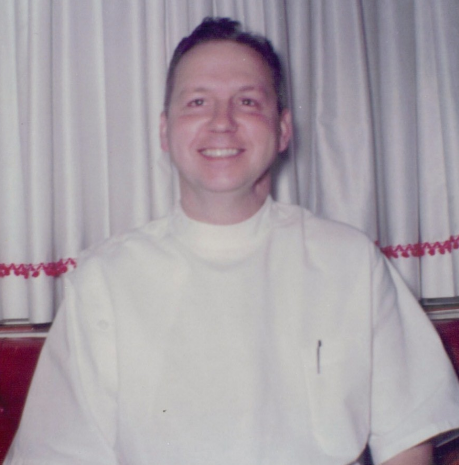Mass Vaccination – We’ve Been There Before.
Posted on | January 30, 2021 | Comments Off on Mass Vaccination – We’ve Been There Before.

Mike Magee
Children of this era, decades from now, will recall a pandemic and their experiences with vaccines, in the same manner as citizens of my age recall the polio vaccine campaigns in the 1950’s.
While my generation was less informed on the science than our counterparts today, we had three advantages:
- National administrative leadership of vaccines and their distribution.
- A focus on mass immunization rather than preferential individualized encounters.
- A unified community school-based (vs. hospital or pharmacy based) campaign, fully engaging local families and their physicians in validating the safety and efficacy of a vaccine, and immunizing the general public.
Management came in the form of Basil O’Connor, attorney and close friend of the President. Their friendship predated FDR’s polio and included O’Connor serving as his legal adviser and for a brief period of time as his partner in the practice of law. He would serve loyally in that capacity for more than three decades as head of the National Foundation for Infantile Paralysis (NFIP).
O’Connor did not have an NIH or CDC to direct his efforts. He took charge himself, setting up an organizational structure with reach across the country to support services and fundraising. Ultimately, 3100 chapters would be established and $233 million distributed in patient services for children with polio by 1955.
On the research side, Jonas Salk was recruited to the University of Pittsburg in 1947. In 1948, he received a grant from the NFIP to identify the various types of polio. But Salk’s goals were much more expansive. He intended to develop the first successful vaccine for the disease and devoted the next seven years to that effort.
Fully funded by the NFIP at $7,500,000, and therefore requiring no need to be distracted by fund raising, Salk initiated a trial on 15,000 children in Allegheny County, Pennsylvania in 1953. The decision to stay close to home vastly simplified the logistics and avoided extra red tape. It didn’t hurt that he also tested himself, his wife and his children or that he achieved startling results on his first try out. Blood drawn from his subjects revealed antibody levels to polio that were 4 to 16 times the levels in non-treated children. These results were reported out in the Journal of the American Medical Association on March 25, 1953.
Following this announcement, which received worldwide attention, Salk took two additional steps that clearly demonstrated both his political and scientific prowess. First he went to Basil O’Connor at the NFIP and secured 100% funding for the largest scientific study that would ever be run in the US. In addition to securing that funding, he enlisted the vast marketing expertise and distribution system of the NFIP.
Secondly, rather than design the trials himself, at a time when scientific competitors were nipping at his heels, Salk enlisted his very popular and highly respected former mentor, Thomas Francis, to design and run the trials. Besides his scientific reputation, Francis had a distinguished record of public service having been the director of the Commission on Influenza for the Army Epidemiologic Board. By 1953, he was a renowned virologist and chair of the epidemiology department at the University of Michigan’s School of Public Health. Once Basil O’Connor with Salk chose Dr. Francis, they carefully created a firewall between themselves and the scientific trials.
Francis was fully aware of the deficiencies in the design. Did every parent clearly read the permission material? Clearly not. Was defining the trial’s purpose “to determine the effectiveness of a vaccine in preventing paralytic poliomyelitis” understating the trial’s experimental nature? What sufficed as a “valid parental signature”? Why were the terms “permission” and “human experiment” found nowhere on the consent form? Was Basil O’Connor’s letter on behalf of the NCIP that accompanied the parental materials and defined their child as having been “selected to take part in this great scientific test” overselling? And did he consciously underplay risk and deliberately transfer liability when he capitalized the words “THE VACCINE WILL BE GIVEN ONLY ON REQUEST OF THE PARENTS” in his letter?
My doctor father received a parcel post in his office in the Spring of 1954. It contained indistinguishable vials of the vaccine and placebo. He used the materials to inject the 2nd graders at our school, including my sister Pat. The event was memorialized in a front page photo in the local Hudson Dispatch of my father, needle in hand, and Pat wincing from the shot, but also proudly displaying her button and card declaring her a “Polio Pioneer”. That was Basil’s idea, as it was to give all the children who participated, including the controls who received no injections, buttons as well. In his view, no one should feel left out of this national public effort to beat the enemy – Polio.
The end results were startling and have never been replicated since. Beginning April 26, 1954, within a year’s time, 1.8 million children in 15,000 schools in 44 states were recruited for the experiment. 300,000 health professional volunteers, including my father and the majority of the physicians in the United States, participated without pay. 750,000 of the children – all 2nd graders form public and private schools – were part of a rigorous double blind study.
It was Dr. Francis who stood up on April 12, 1955 at 10:20 AM in Rackham Lecture Hall at the University of Michigan in Ann Arbor and declared in his characteristic direct style, “The vaccine works. It is safe, effective and potent.” The public trusted him at his word and complied with mass inoculations.
Tags: basil o'connor > covid > FDR > Pandemic > polio > public health > Salk > vaccines


